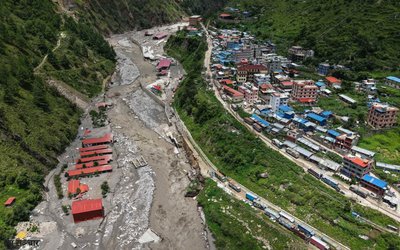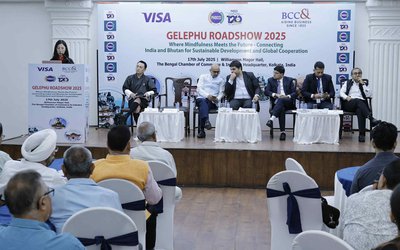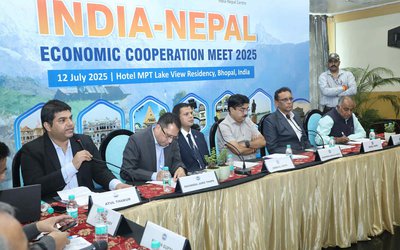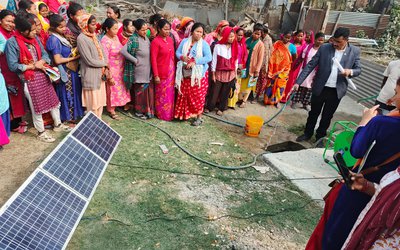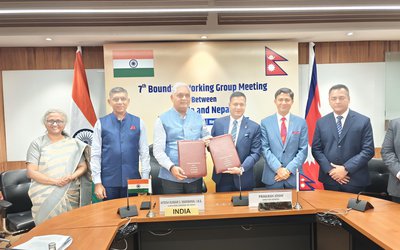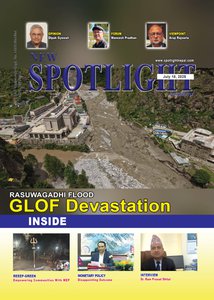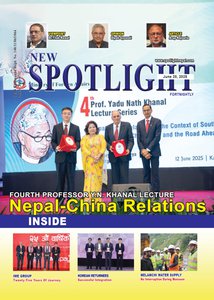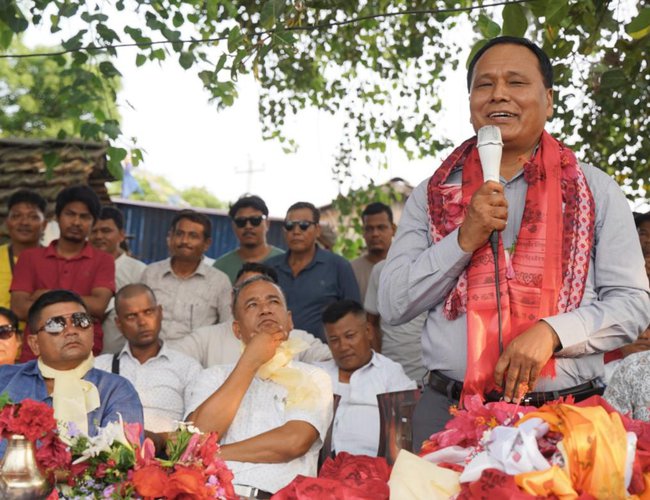
Kulman Ghising, the outgoing Managing Director of the Nepal Electricity Authority, said that bringing electricity to the Tangiya settlement in Jitpur Simara Sub-Metropolitan City–16, Bara, felt like winning a war.
Due to the proposed construction of the second international airport in Nijgadh, electrification in the Tangiya settlement had been delayed for years, forcing residents to live in darkness. However, in October 2022 (Ashoj 2079), electricity was finally supplied to the area after the Nepal Electricity Authority (NEA) invested approximately NPR 23.4 million to extend transmission lines. There are around 1,476 households in the Tangiya settlement.
During his first visit to the electrified settlement on Tuesday, Jestha 27 (June 11), Ghising recalled the moment the lights were turned on and said it felt as though one government body had won a war against another.
He mentioned that while the NEA supported electrifying the area, other government agencies, including the Ministry of Tourism and Civil Aviation, were against it, arguing that the settlement would eventually be displaced due to the airport project. This disagreement led to inter-agency conflict.
Ghising said,"We were running a campaign under ‘Bright Nepal’ to deliver electricity to every household. It felt frustrating to hear that a place just 5–6 kilometers from the East-West Highway was still without electricity. Toward the end of my first term, a tender was floated for electrification, but it was later canceled due to opposition from government agencies. During my second term, I insisted that even in such extreme heat, residents should be provided electricity. If refugees are given basic facilities, why should our own citizens be deprived? We then moved forward with the process and succeeded in electrifying the area."
He shared that although there were initial obstructions from the Forest Office after the tender was issued, the NEA managed to coordinate effectively and complete the electrification.
The Ministry of Energy, Water Resources, and Irrigation had requested the Ministry of Culture, Tourism, and Civil Aviation to grant approval for electrification. The tourism ministry eventually agreed, stating that electrification could proceed if each household in the settlement submitted a written commitment to vacate the area prior to the airport construction. Following this, new electricity connections were installed after collecting written commitments from every household.
The NEA laid about 7 kilometers of 11 kV power lines along motorable roads without cutting trees. To avoid deforestation, covered or insulated conductors were used in forest areas.
- Nepal Investment Mega Bank Limited Launches 'Instant EMI' Facility For the First Time in Nepal
- Jul 30, 2025
- GIZ 50 Years Partnership: Energizing Nepal’s Energy Sector
- Jul 30, 2025
- Prime Minister Inaugurates Rani Jamara Kulariya Irrigation Three Years After Completion
- Jul 30, 2025
- Nepal-India Border Working Group Meeting Agree On Inspection And Maintenance e Work Of Pillar
- Jul 30, 2025
- Weather Forecast: Generally Cloudy Across The Country Possibility Of Moderate Rain In Hilly Regions Inclding Sudurpaschim Province
- Jul 30, 2025

